
If you and your loved ones expect to keep cool in an emergency, you need to practice team tactics.
When most think of team tactics, they envision highly trained Delta Force operatives—or a SWAT team—breaching a door and conducting a dynamic entry. That’s a good example of team tactics in action … but few of us will ever participate in an activity like that.
However, that doesn’t mean you shouldn’t develop your team tactics. Well, unless you’re a hermit who has no friends and has moved to the mountains to live alone and write a manifesto. Most normal humans have other humans they often hang with, whether they’re their good friend, a spouse or children.
I’ve had some team tactics training. As a soldier, and back in my badge-wearing days, it was part of the curriculum. I’ve also attended a team tactics course at Gunsite Academy that focused on civilian teams, like a husband and a wife. Recently, I also did some work helping Benghazi survivor and master firearms instructor David “Boon” Benton, who was portrayed in the movie 13 Hours, train our local SWAT team.

Regardless of the group or situation, there are two things that team operations—whether they involve a six- or two-man team—have in common: A tactically proficient and successful team must have a plan, and they must have good communication.
Determine Your Team
If you’re a loner, you’re your own team (and hopefully someday you’ll find another human who finds you moderately tolerable). For the rest of us who are at least semi-normal, we’ll have a good friend and/or a significant other with whom we’re commonly around. This is your team, and it might also include children.
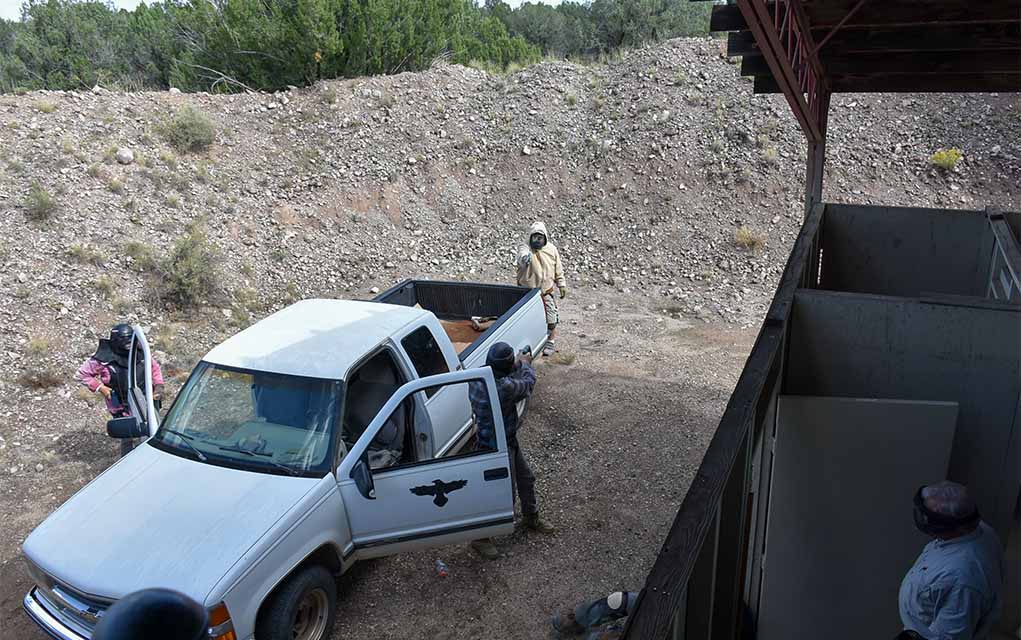
Each team member should also have a job. These jobs could be as simple as following your mother, calling 911 or holding on to the hands of your siblings. A job for a team member could be as simple as being armed and making sure an emergency first aid kit is present and accessible, and all team members should be responsible for not forgetting to have their cell phone with them.
This doesn’t have to be complicated. In fact, it’s best when kept simple and generic, and don’t put excessive responsibility on the backs of untrained or juvenile team members. However, every team member should know what the job of the other team members are. At a minimum, this tells them who to look to for guidance, and if capable, others know what each team member is responsible for and then they can assume that role if necessary.
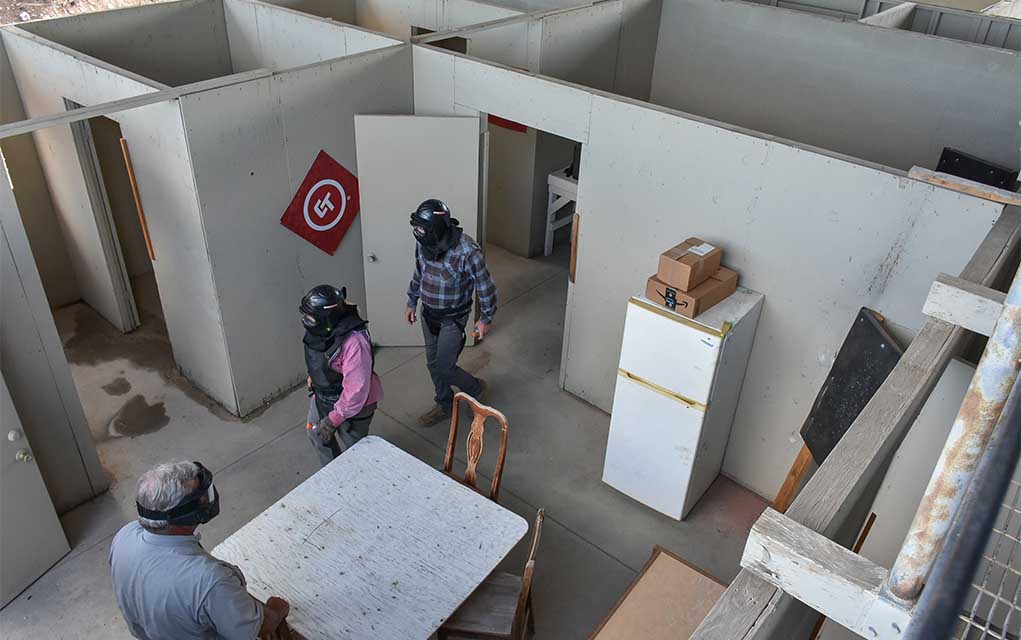
In fact, establishing a team chain of command is important. If you’re identified as the team leader, but your wife and kids are out without you, generally your wife would assume that role. This means one of the kids—if capable and of a responsible age—can assume the duties of your wife. This goes a long way toward answering the question, “Dad’s not here. What now?”
Have A Plan
It’s impossible to develop a comprehensive plan for every situation that might develop. However, you can institute operating guidelines for common tasks that might occur. These are established tactical responses, predetermined to deal with things that have a high probability of happening.
Dealing with doors is a perfect example.
During one team tactics course, my partner and I were presented with various reality-based scenarios we had to react to. This was during force-on-force exercises where all the participants were armed with handguns that fired Simunitions. During the prior day while under the guidance of an instructor, my partner and I were given an opportunity to establish some operating guidelines: make a plan.

One of our plans was how we’d deal with opening closed doors that led into the unknown. Just before the Simunition training began, I told my partner we should deal with every door just as we had decided during the previous day. This worked well and eliminated unnecessary communication and possible confusion. When we approached a closed door that we had to go through, each of us knew—without a word—what we were supposed to do.
This same concept can apply to a lot of situations.
Let’s say you want to establish a plan to tactically exit a location by vehicle. In this instance, you could identify the person who will drive, where each team member shall sit and how to access the vehicle depending on the direction of approach and even the direction of the potential threat. Sure, when the time comes to implement the plan there may be extenuating circumstances—the pre-identified driver might be injured—but you can plan for that as well: If team member A is injured, then team member C will drive.
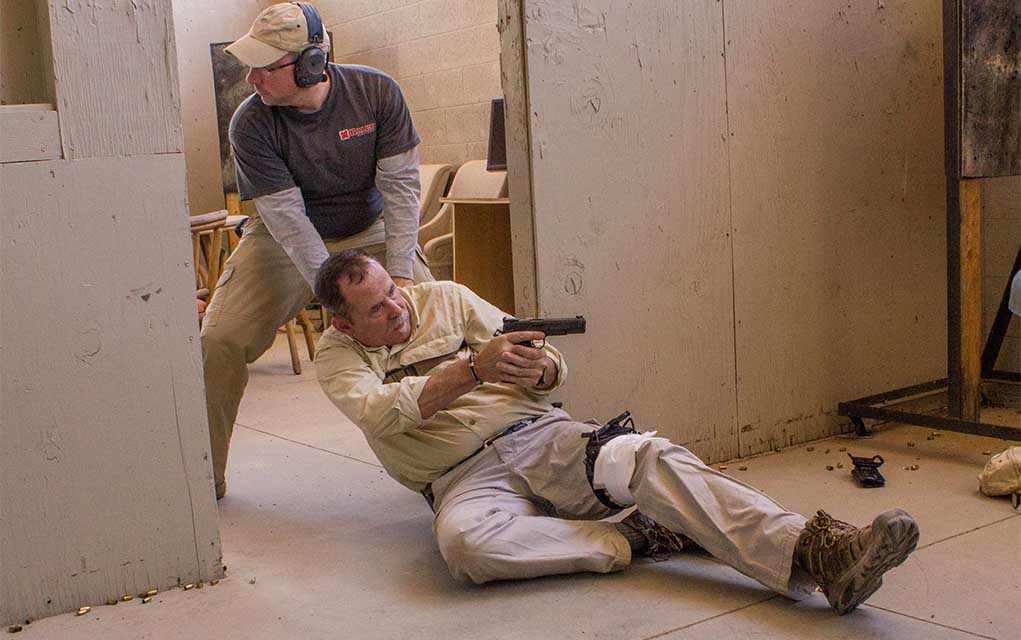
If you have children, it’s very important to include them in these plans. It’s also important to dry run the plan to make sure everyone is on the same page. If you have an infant, who is going to carry him or her? It could be your wife or an older sibling. If you’re planning a response to a home invasion or burglar, the kids need to know what to do when the alarm sounds.
You should also always have at least one contingency; if you cannot do plan A, execute plan B. Similarly, you should also have a rendezvous point established outside the home, and you should also do the same for commonly trafficked locations such as malls or shopping centers.
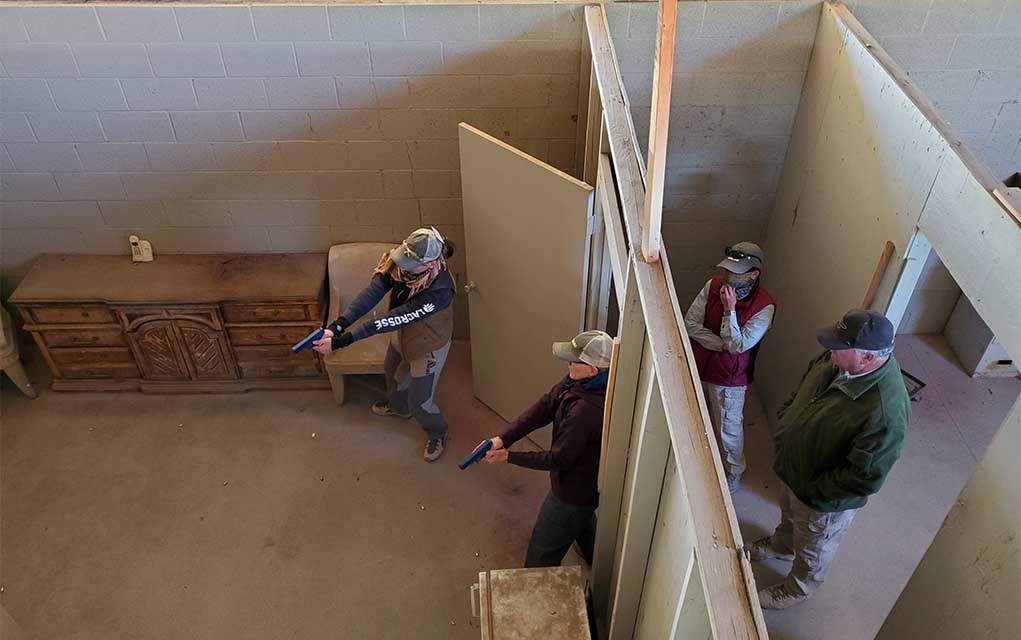
Communication
More than anything else, communication is the most important aspect of team tactics.
Let’s say, for example, you and your wife are engaged in a gunfight and you either need to reload, have a stoppage or maybe you dropped your gun. Your wife needs to know about this while it’s happening; she needs to know why you aren’t shooting or why you’re hiding behind the car. And she needs to be made aware of this without having to watch you or look to see what you’re doing.

Screaming, “I’m reloading!” or “I’ve lost my gun!” takes too many words and might not be a good idea. Establish simple and direct communications for potential issues ahead of time. You could simply yell out, “Working!” and your wife would know you’re temporarily unavailable. To let her know the problem has been solved, your communication could be as simple as “Up!”
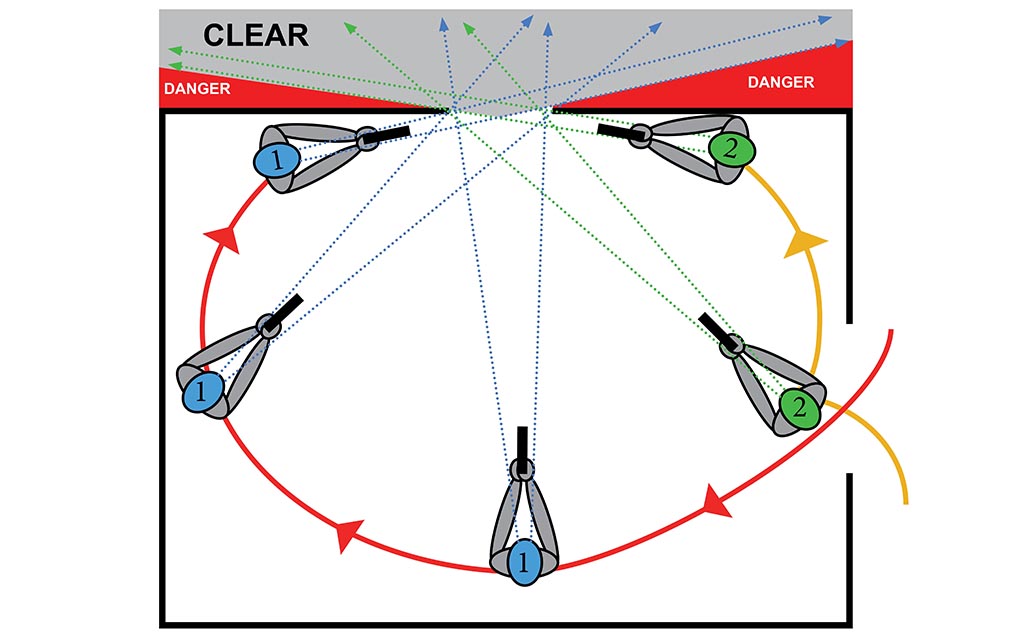
Talking while shooting or while responding to a lethal encounter doesn’t come naturally. It’s something that needs to be practiced. Also, if you’re in a face-to-face encounter with a potential threat, having an action word that’ll key your partner in on an action you’re about to take is a good idea—kind of the opposite of a “safe” word, if you know what I mean. But in some situations, your communication can and should be non-verbal.
You should have hand signals that help convey actions or actives like to cover or watch, to move or maybe even run. Similarly, you should be able to convey the direction you want to move or the location of a potential threat. Think these communications through, keep them as simple as possible and limit them to the obvious. This isn’t a time to establish a new and comprehensive sign language; you simply want to be able to convey highly probable observations or instructions without words, as clearly and quickly as possible.
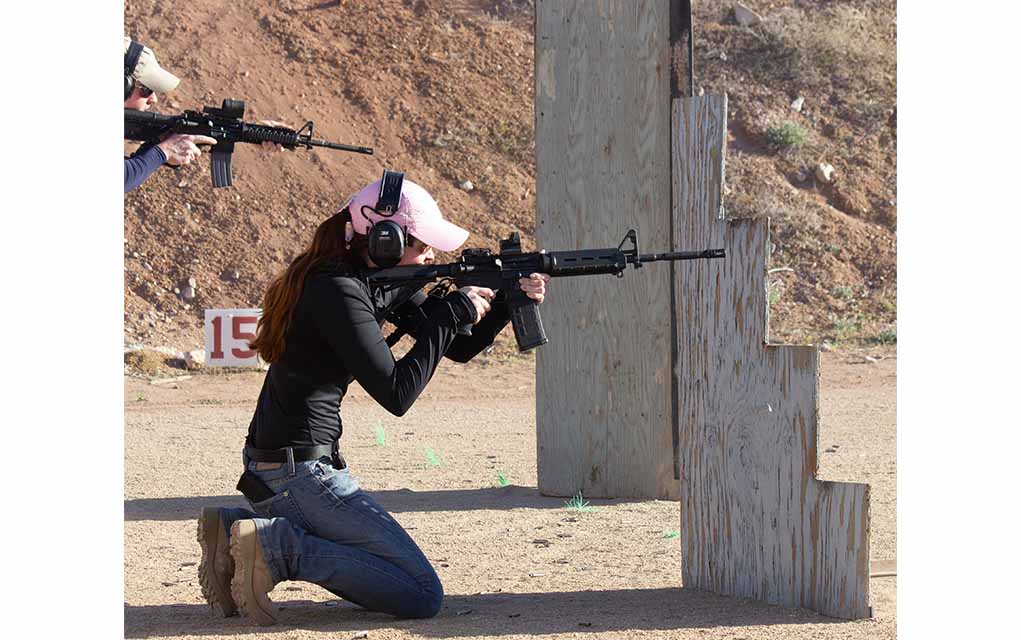
Go To School
The best way (of course) to learn team tactics is to take a class from a reputable school. But keep in mind that most team tactics courses aren’t shooting courses: Don’t expect to attend a team tactics class to learn how to shoot. In fact, many schools offering team tactics training have a training prerequisite so that they know you can shoot and handle a firearm safely before they’ll let you in the class. Yeah, you’ll do some shooting in a team tactics class, but you won’t learn to shoot in a team tactics class.
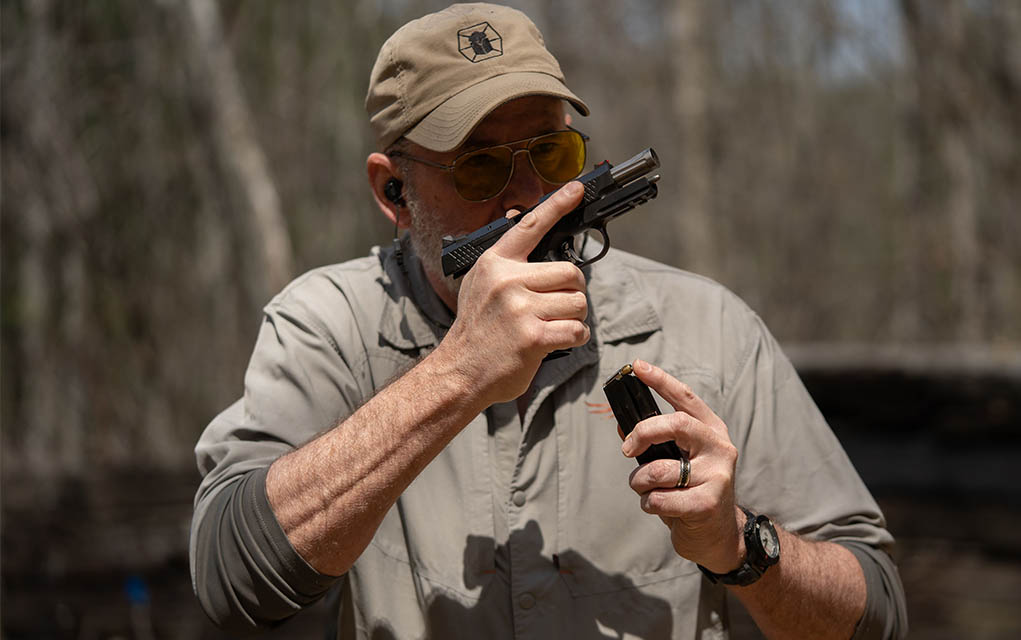
This might seem overly stringent, but it makes perfect sense. It takes about five, 8-hour days of training to go from a non-shooter to someone who is safe and reasonably competent with a defensive handgun. A basic team tactics course should be, at a minimum, 2 to 3 days long … and ideally 5 days. To learn to shoot and to learn team tactics could consume 2 weeks, and most of us can’t take 2 weeks off from life to do that. It’s just like with any other firearms discipline—you learn to shoot and then you learn the tactics.
Editor’s Note: This article originally appeared in the April 2024 issue of Gun Digest the Magazine.
More On Shooting Drills & Training:

Next Step: Get your FREE Printable Target Pack
Enhance your shooting precision with our 62 MOA Targets, perfect for rifles and handguns. Crafted in collaboration with Storm Tactical for accuracy and versatility.
Subscribe to the Gun Digest email newsletter and get your downloadable target pack sent straight to your inbox. Stay updated with the latest firearms info in the industry.
Read the full article here

